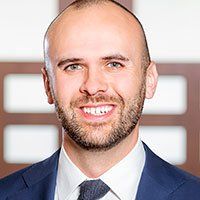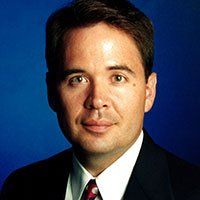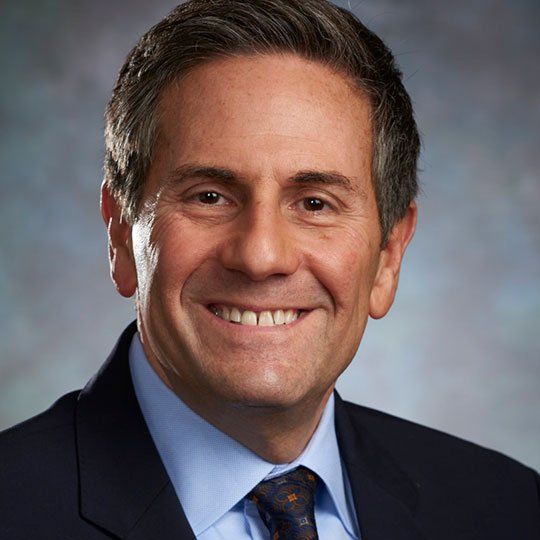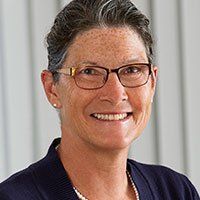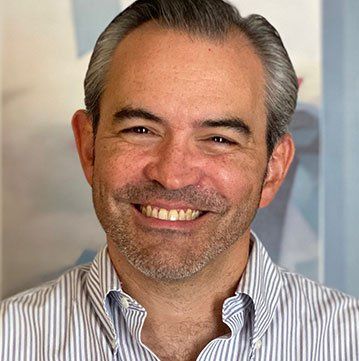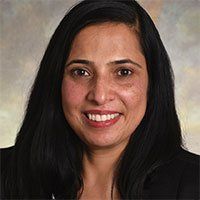Minnesota health care roundtable
The COVID-19 Pandemic: Strategies moving forward
Over 51 previous sessions, the Minnesota Health Care Roundtable was held before a live audience. In response to the pandemic we have pivoted the format of this “conference-in-print” editorial feature to bring you essentially the same information, however distilled from electronic responses vs. the transcript of a discussion. In many capacities this new process presents a superior report on any subject. It allows participants more time to prepare their thoughts and increases the range of potential participation. Not without some irony the first topic to be explored in this new format is lessons learned from, and preparing for life after, the pandemic. We extend our special thanks to the participants and sponsors for their commitments of time and expertise in bringing you this report. In November we will publish the 53 session of the Minnesota Health Care Roundtable on the topic of improving clinical and non-clinical care team interoperability. We welcome comments and suggestions.
What were the biggest problems your organization faced as a result of COVID?
Kit: The confusion surrounding the elective procedure prohibition. It resulted in a significant drop in patient procedures and a patient backlog that was difficult for all concerned to work through. As an additional consequence many providers were forced to go through reductions in force due to the extreme drop in patient volumes.
Ruth: The uncertainty, the broad sense when it was announced. What would be the impact on our employment setting, on doctors, how would our services be effected and how would they be delivered? How would we do what we do? We went to 100% remote in 10 days. An immediate problem was getting all the council members set up to access data remotely. There were technology challenges, and daily problems with lost connectivity. It happened during our peak period to process licenses – going from working in the office to working from home was enough of a hurdle but doing it at one of our busiest times of the year made the problems more difficult. The bulk of our complaints come in writing and processing mail became another work-around. Finally, a lot of our work is accomplished through conferences which were forced to stop and we had to find new ways to facilitate interaction.
Jesse: Metropolitan Center for Independent Living is among the 405 Centers of Independent Living in the United States. We assist with direct services for over 7,000 people with disabilities in the seven-county metro area of St Paul/Minneapolis and 25,000 callers as an operations center for Disability Hub MN throughout the State of Minnesota. Our Mission Statement is “Removing Barriers, Promoting Choices.” We are very concerned the impact that COVID is having for high-risk populations including but not limited to: people with disabilities, healthcare providers (PCAs and non-paid care givers included), diverse populations, people with complex health conditions and people over 60.
It is vitally important that our agency works very closely with the Minnesota Department of Human Services, Disability Services Division, Minnesota Department of Health and the Minnesota Department of Employment and Economic Development/Vocational Rehabilitation Services along with local county government in addressing the human services, health, benefits, housing, employment, education, direct care support, resources and public health needs for people with disabilities. When communication with these agencies is disrupted our services can be disrupted.
Deepti: As a healthcare system the biggest challenge COVID has created is how to keep care available for the routine healthcare needs while also serving the needs of the pandemic. This has created an enormous stress to our system both financially and in terms of resources. Being a safety net system we cater to those that are predominantly on state assistance or often are not able to afford any health insurance but we don’t turn anyone away which does then affect the bottom line. Other huge problems were the potential for delays and breakdowns of care for patients, the aftereffects of delays in routine care such as well child checks for children, and chronic disease management in all ages.
Scott: The Executive Order from Governor Walz to cease all elective procedures had a significant impact on out practice. Our patient volume plummeted and we had to deal with cosing the clinics to avoid potential contacts and viral spread. We experienced a huge loss of revenue and there were considerable problems maintaining PPE inventory.
Victor: My patients have diabetes and other chronic conditions. The shutdown of routine health care and the identification of at-risk patient for severe COVID isolated my patients. They took shelter in their own home and were afraid of personal contacts even with close family members.
Everyone had a different definition of “elective”.
—Kit Crancer.
What were some of the best solutions you found to these problems?
Jesse: As a Kellogg Fellow in Public Health from the University of North Carolina, Chapel Hill, health promotion is essential to understanding public health. New Zealand for example, has led all countries with the lowest infection rates throughout the world. We studied how they deployed their top ministers to focus on the public health needs of the citizenry. Two areas of their model had areas of application for governments throughout the world, whether that be for a country, a state or a county. They had metrics to monitor on COVID and they had a high response that was adaptable. They looked at the pandemic over the arc of its progression and, as importantly, had begun around year 2005 to adopt the “Ottawa Accords on Health Promotion”. Health promotion is vital to inform people on the tenets of public health and the importance of well-being is the responsibility of everyone.
Deepti: We did a lot of advocacy around the financial piece at federal, state and county level and received some assistance, but it was not enough to compensate for the high cost of care. We are continuously balancing our supply and demand and tailoring our staffing and resourcing to be the best stewards of our finances.Telehealth has been a welcome solution to close the gaps in care and keep the line of communication and care delivery open between patients and providers.
Kit: We offered significant flexibility in scheduling, and we work with patients and referring offices to ensure patients are able to come into one of our advanced imaging centers, feel safe, and get the answers they need. Additionally, in some states we’ve seen an increased willingness among health systems to work with non-affiliated providers to ensure that the communities health needs are met, regardless of site of care. We hope to see more of this type of collaboration in Minnesota in the future.
Scott: We established an employee furlough program to help minimize salary expenses while maintaining medical and dental benefits. We went from zero telehealth to 100% in 2 weeks, and after 2 months cotinued to evaluate 90% of clinic patients via telehealth. We found multiple vendors to supply PPE to allow us to develop sufficient inventory.
Ruth: We developed a rotating schedule for staff members coming into the office to manage the things that had to be done on-site. In doing this we made sure there were the fewest possible staff members in the building at any time. While we were developing this method for assuring work flow we set up a virtual work schedule that included meetings and deadline schedules. It took some patience and concentration but we were able to establish enough of a baseline to meet our goals and obligations.
Ruth: We developed a rotating schedule for staff members coming into the office to manage the things that had to be done on-site. In doing this we made sure there were the fewest possible staff members in the building at any time. While we were developing this method for assuring work flow we set up a virtual work schedule that included meetings and deadline schedules. It took some patience and concentration but we were able to establish enough of a baseline to meet our goals and obligations.
What have been the most positive things from the increased use of telehealth?
Victor: Telehealth during COVID has enabled the recognition that there is a range of ways in which clinicians can work with patients – in person, at home, via virtual video visits, and asynchronous communication – and that all of these forms have a role to play in meeting our patients where they need us without unnecessary and unjustifiable disruption to their lives.
Ruth: Access to and continuity of care for isolated patients, making timely appointments and keeping them. Perhaps the best thing has been how it allows at risk patients to minimize the potential for exposure.
Scott: As we are not constrained by the “bricks and mortar” of clinic rooms, we are providing more clinic access, more quickly and efficiently. It provides ideal social distancing for patients and staff. Many providers and staff can perform excellent telehealth encounters while working away from the office and clinic. For patients, no time is lost commuting to the clinic, sitting in the waiting room and exam room, cueing up for clinic discharge/lab/orders, etc. It provides the ability for the patients and providers to see each other without masks.
Kit: Patients have still been able to receive the care that they need without physically entering a facility. Over 10 million Medicare beneficiaries received telehealth services from within the first three months of the pandemic.
Deepti: Patients and providers were desperate when the pandemic first hit to connect with the each other. Telehealth improved access and helped patients find care in the comfort of their own setting, without having to worry about transportation, child care, time away from work etc.
What have been the most negative things from the increased use of telehealth?
Jesse: For people with disabilities with economic challenge, many do not have access to the internet, or if they do, often have solely a cell phone. This means that many go without access to telehealth. We know that for thousands of people with disabilities who are on waivered programs, many have limited minutes of use and therefore communication with case managers, social workers and health care service providers are limited, because people are seeking to retain as much time as possible on a monthly basis.
Ruth: So far we have received no complaints from telehealth. We expect telehealth may lead to pressure from facilities needing to waive or defer licensing requirements- to keep people out from other states. We have always worked closely with the state and medical associations around this issue. That said, the telemedicine registration statute is generous –intermittent use is generous, there is a lot of exemption language. Within an executive order from Governor there could be ways to rewrite or maintain a relationships with a provider and facility. These issues are being resolved but the lack of clarity around potential areas of malpractice concern could be considered a negative thing.
Victor: We quickly recognized how virtual visits could fail people who could only access us through the phone, and how clinicians struggled to connect with patients virtually. These experiences have identified areas in need of further innovation, while moderating expectations of a future of care that cannot be digital by default.
Deepti: While telehealth is a game changer, it does not lend itself well to many specialties. For example an eye exam via telehealth is challenging. Additionally even after a remote appointment a lot of patients still need to come in for lab or imaging studies. Some healthcare facilities do not lend themselves well to the “social distancing” concept.
Scott: Video quality varied, often based upon geographic broadband access. We had to find ways to ensure that our doctors and APP’s had quiet, comfortable and secure telehealth workspaces, whether in the office or from home. There are issues around variable insurance coverage from the third party payers.
Moving forward what are the most important things to consider as telehealth becomes an increasingly common tool for health care delivery?
Kit: In the face of high-profile health data breaches, questions surrounding individual privacy and freedoms after the relaxation of HIPPA laws during the pandemic. We expect that Congress will take a re-invigorated look at health privacy in general. Additionally, we’ve seen a number of state policy makers across the country that are working to encourage telehealth visits by ensuring payment parity regardless of setting or site in which a consultation takes place. There’s efficacy in telemedicine, and further, particularly during this public health emergency, there is safety for both providers and patients, and that’s something that’s very attractive to policy makers.
Scott: Establishing a good rapport with patients during electronic encounters. The loss of many non-visual cues, places more importance on verbal communication to gain the trust of the patient. The cognitive work, the medical decision making of doctors and advanced providers is the same with telehealth as in person visits. Payers need to appreciate that and avoid differential payment models for telehealth. Millennials and most patients under the age of 70 have smartphones and appreciate the improved access and communication with their providers.
Deepti: All healthcare systems have realized that telehealth is here to stay although the volumes may decline from the peak of the pandemic when almost 65% of all care delivery was via telehealth. The most important consideration for all systems will be to study their patient populations and define a telehealth strategy that is best for their patient populations. There is also the question around “TeleEquity” –does telehealth widen the health disparities gap as technology favors the use by the fortunate few? So far studies have shown that technology in terms of devices is not a barrier as most residents of MN have a smart phone but other barriers like language, digital competency, broadband access and confidence in this modality of care may play a larger role in the patients using this modality.
Jesse: We have to think about access to Wi-Fi as a necessity for the common good of all, especially in times of a public health crisis. It needs to become affordable for everyone. We have to find a way for high-speed Wi-Fi to be available throughout Minnesota. We know from the other seven Centers for Independent Living in Minnesota, there are many areas where providing remote services is difficult because of the limitations on access to Wi-Fi.
What is most concerning is that during this public health crisis, for significant percentages of the high-risk populations as I stated earlier, there is evidence of a growing cyber-divide in which many people do not have access to adequate internet services, or band-with, or even computers.
Ruth: Telemedicine is a tool, not a specialty. It is just a mode. There is a lot of confusion as to what it does and how it can be used. In some cases it offers clear and immediate benefits, in others it does not. Our interests are in monitoring and maintaining patient safety. We are active in local & national discussions around these topics and looking at how changing location of care impacts them. We are also concerned with issues around money. How will approval for remibursement be different? If payment is outside the structure of regulatory boards how can we assure there will be no abuses? Another topic is what if patients pay in cash for telehealth services, how can this be safeguarded.
Many people do not have access to adequate internet services.
—Jesse Betheke Gomez, MMA
What kinds of employees have shifted to working from home in your organization?
Deepti: Health care is typically a space where human interactions are important and there was not template or provision for working from home when the pandemic started. A lot of our workforce shifted to remote to preserve social distancing. What we learned was there is a subset of employees that could easily keep this model and be just as productive. A lot of our IT staff, finance personnel and call center employees will continue to work remotely for the foreseeable future. Some staff, including clinical staff, can have a hybrid model where they can work from home when doing telemedicine or administrative duties and come in only when seeing patients face to face.
Kit: Most of our employees outside of the clinical setting have moved to a work from home environment.
Jesse: Our human service providers are providing remote services, and we have instituted a direct-client activity platform with associated forms and criteria so that we have optimal safety precautions for a client direct contact. Our Personal Care Assistants (Direct Care Professionals) continue to assist people directly with direct care support.
Scott: At any time, 40-60% of our staff are working from home. This includes schedulers, patient coordinators, health information management providers, human resource management personnel, marketing staff, billing and coding specialists, finance, compliance and credentialing department members, and even leadership.
Please share some of the impact this has created – both positive and negative
Jesse: We have found more ways to deliver services in the most efficient manner possible. We are committed to continual improvement, and learn from our operations on real-time adaptions that allow us to assure meeting the needs of the people we assist in the most responsive manner possible.
It is very important that we do all we can to help inform everyone in Minnesota about public health and health promotion.
Scott: Productivity has remained high, regardless of site of work. It is more challenging to maintain and grow comradery via electronic meetings (Zoom). Electronic meetings longer than an hour create difficulty for attendees to remain engaged. Shorter more frequent meetings seem to work better. Spontaneous interactions amongst staff are much less frequent, and this may have a long term impact on creativity and “cross fertilization” between departments.
Ruth: A clear benefit is the reduced exposure to infection. An unexpected benefit has been an expansion of our skills leading to more efficient communcation. Somehow it is now easier and better to remain engaged. There is a downside to the lack of social interaction and personal support.
Deepti: The positive impact has been creation of space in terms of parking, less crowding etc. For some it has also allowed improved work life balance as they can be close to families and continue to work. The negative impact is not all can embrace the technology driven remote work culture and sometimes the best problem solving can only happen when folks are interacting in person.
What are the most common questions you have heard from patients about the pandemic?
Kit: We’ve worked hard to offer patients a safe, high-quality, community based option to receive health care. Safety is top of mind for patients when scheduling an exam or going into a health care facility. Ensuring that they’re comfortable and safe is our top priority. It’s been remarkable to see how quickly providers have adapted their practices and facilities to our COVID reality.
Scott: Will this ever end? Is it really as bad as “they” say? Is your faciliuty safe for my condition?
Deepti: For us too. “Doctor when will this be over” is the most common question from my patients. Unfortunately I have no clear answer for this. A lot of them delay care, essential screening tests and elective surgeries in anticipation that this will all be over soon. We have to explain to them that what with the numerous ebbs and surges we cannot tell when there will be is an end date and that they hould continue to seek care as usual.
Jesse: We have recently begun an outreach program in working directly with the Minnesota Department of Health. We assist people with disabilities to learn how they can receive COVID testing throughout the Metro area. People ask questions about what they can do to protect themselves, to mask-up, to practice social distancing and have the information they need in order to receive testing.
Ruth: We have not received questions from patients. Most of the questions we have dealt with were from physicians, primarily retirees asking how they could help and if they needed waivers for exam requirements.
Victor: Some of my patients did well, with work-from-home conditions reducing their stress, stabilizing their routines, and improving their own capacity for self-care. Others found themselves coping through overeating, stressed by an overexposure to news and social media, and unable to exercise outside their house. As time has gone on, some adapted and others did not, falling into depression and loneliness. Without an end in sight, patients are asking me when they will be able to hug and touch loved ones, to trust the space between them and those with which they make family, community, or business.
We went from zero telehealth to 100% in 2 weeks
—Scott Ketover MD, AGAF, FASGE
What lessons should be learned from the Governor’s executive orders around the ban on elective surgeries?
Kit: The prohibition wasn’t limited to “surgeries” and also included “procedures” like imaging. Additionally, everyone had a different definition of “elective” since the order was written in such a broad and vague manner. As the order dragged on, it became more and more difficult for providers to discern what procedure was “elective” and what was emergent. For example, a patient experiencing chronic cramping and pain was referred to us by a gastroenterologist. This imaging could have been dismissed as an “elective procedure”, but we proceeded with the scan which revealed an abnormality in the colon. Subsequent emergency surgery indicated early stage colon cancer. The patient’s cancer was removed, which spared her from chemotherapy and a colostomy. Had we waited to see the patient until the order was lifted, she could have had metastatic disease and a far more dismal prognosis. Unfortunately, we have a number of examples of delayed care that have resulted in long-term negative health outcomes and families that are suffering the consequences. In the future we should look to other states, like Texas and Washington State, which allowed “elective procedures” to take place in settings that didn’t draw from vital PPE or decrease hospital capacity to treat COVID patients.
Ruth: There are risk variations depending on what the procedure might be- we need to establish priority – what should be first? There is no need for premature panic. It is important to maintain both the safety of the general public and risk mitigation in serious illness.
Scott: We must make clear that free-standing surgery centers do not pose a threat to inpatient care or ICU beds. We must recognize the critical role they can play in an overwhelmed health care system. We must establish clinically based and mutually accepted definitions of “elective”. There are differences between what is urgent or emergent versus elective with medical necessity, versus purely for screening or cosmetic reasons. Also, “elective” refers to timing and scheduling of a procedure, but it does not mean the procedure isn’t needed. Finally we must identify interim steps between “survival” shutdown mode and “all clear” that can be activated during future executive orders. Interim steps would recognize that there are dangers to postponing all procedures within a broad category. Deferring care for one to two weeks might be acceptable for some patients, but a continued postponement can ultimately be harmful when those same patients are deferred longer.
Deepti: At the time the initial executive order was released it seemed to be the right call, the problem is all “elective” surgeries cease to be elective after a period of time-someone dealing with knee pain and needing an elective knee replacement cannot suffer for months just because elective surgeries are cancelled. Similarly surgeries for work up of cancer etc., which are elective in nature, can only be delayed for finite periods or else they can lead to catastrophic consequences.
What are the biggest issues you see around the COVID vaccine?
Jesse: We need to continually provide health promotion with information about the importance of well-being, clear information about why vaccination is important and assure that information is accessible to all. In addition, we must think about preparing and responding to the needs of communities and populations over the arc of the pandemic. We have to also think about continuity of services, supports, resources and responsiveness to high-risk populations over a longer view of time, that follows the arc of the pandemic, beyond 2021.
Scott: There are many issues. Distribution/vaccination based upon categories of need (elderly, congregate facilities, health care workers….). Maintianing adequate supply for the all populations, the costs of purchase, distribution, vaccination. Dealing with deniers and how to document when a sufficient percentage of a population has been vaccinated to move towards pre-COVID activity are some of these issues.
Deepti: The vaccines have been the ray of hope everyone needed. The biggest issue right now is getting the critical 80% of the population vaccinated to reach herd immunity. Already we are seeing that the number of people eager to take the vaccine is declining. We need to educate the masses about the role of vaccines in fighting this pandemic and build trust in all communities around vaccines.
In absence of clear regulations it is important for us to be concerned with potential abuses.
—Ruth Martinez
What is your organization doing to prepare for these issues?
Jesse: Since the beginning for the pandemic, MCIL has worked directly with key officials in Minnesota on the necessity of preparing to address the needs of people with disabilities - throughout the duration, and arc of the pandemic. I am deeply grateful being a Kellogg Fellow in Public Health in their Leadership Program and learning about best practices to respond to epidemics. During this pandemic I have relied greatly upon my formal education in public health.
We will continue to work in assisting people with disabilities in the safest manner possible. We also will continue to be part of many high-level working groups on addressing the public health of all in Minnesota throughout the arc and duration of the pandemic.
Deepti: At Hennepin Healthcare we have taken a data driven approach to vaccinations. From the very first phase of vaccination we did targeted outreach to communities that had the highest COVID burden, which are typically communities of color living in low income neighborhoods. We also know that some individuals will never come to a healthcare facility to be vaccinated. We have to take vaccine to them. We created pop up vaccination clinics at homeless shelters, places of worship, and other community centers. We also had vaccine clinics over extended hours and weekends so that people who work during the office hours could get vaccinated. A lot of outreach and educational material has been created in multiple languages and trusted community partners have been engaged in educating the communities on the importance of getting vaccinated.
Scott: We will mimic our influenza vaccine program, and try to vaccinate those at higher risk from COVID first.
What have been the most surprising things you have encountered from the pandemic so far?
Deepti: Despite all the scientific evidence there is still a subset of the population that believes that COVID is a hoax. This subset questions everything from masking to social distancing. Educating this group is very important to curb the spread.
Kit: I wasn’t surprised because of the ingenuity of our provider community, but I was happy to see how quickly providers were able to adapt to safely seeing patients in a COVID world. Additionally, I was pleased to see how vocal providers were with respect to their needs, and the needs of their patients, to policy makers.
Jesse: One of the most concerning items that I have learned is the need for health promotion as a fundamental requirement of informing people about public health. We must learn from this pandemic to institute all the time a commitment to the well-being of all in Minnesota and in the United States.
In addition, we have to assure that when we focus on healthcare, we recognize that there are many platforms for healthcare that are also home-based, community-based and that it is the entirety of our healthcare platform from hospitals, clinics, ambulatory services to home-based care including long-term services and supports. Furthermore, we must assure that we think about public health not only encompassing all aspects of the emerging delivery model for health and human services in Minnesota, but that health promotion is a key foundation in order to inform people about health, and well-being as essential.
Scott: The politization of public health measures and too many people identifying as “me only” rather than “we together”. The lack of helpful federal leadership from the former administration.
Ruth: The general sense of premature panic and the absence of support around PPE distribution. It was surprising there was no better plan in place for a pandemic. Everyone presumed there were contingencies but we found out that what we thought we knew was inaccurate.
Patients are asking me when they will be able to hug and touch loved ones.
—Victor Montori, MD
What are things the pandemic has done to accelerate/reinforce needed changes in health care?
Jesse: The need for all in Minnesota and healthcare providers to be safe and protected during this dangerous pandemic, elevated the need to break through barriers in meeting the healthcare needs of people. We need to build upon the gains and insights we have made. There is an increasing role for telehealth, for access to high-speed internet and Wi-Fi access for all throughout all of Minnesota.
Deepti: One thing we have learned is that health care needs to be nimble and flexible to prevent the kinds of breakdowns in care delivery that happened at the onset of the pandemic. Every healthcare system in every state needs to have drills and procedures to ensure they have supplies and infrastructure to support a pandemic-like situation. Telehealth will continue to be a viable care delivery model well into the future. It goes without saying that we need to build our infrastructure and public health resources and develop health policies to support this.
Ruth: How to work at a distance. That we must pay attention to science- we must be personally and collectively responsible- our choices impact the health and safety of others.
Victor: From now on, we cannot be told that in times of crises the main response we have is to fight or flight. We also tend and befriend. We now know that our world does not have to be careless because in fact, when everything is brought to basics, our default behavior is to be careful. This caught me by surprise, but I will never forget it and it fills me with hope for a patient revolution. Because careful communities cannot harbor greedy and industrial healthcare, but rather they will foster careful and kind care for all.
Does telehealth widen the health disparities gap?
—Deepti Pandita MD, FACP, FAMIA
What are the most important things we can take from COVID to be prepared for the future?
Kit: We saw a plethora of hasty, knee-jerk policy making that came from governors across the country due to the absence of strong federal guidance. Should there be another pandemic in our lifetimes, I hope that our elected leadership looks to policies that worked, like expansion of telehealth and modernization of prior authorization strictures, in addition to what policies or tactics failed. Additionally, I would hope that our elected leadership relies more greatly upon input from our physician community as well as their clinical judgment.
Jesse: From a view of public health, my training tells me to assess and learn where others have been successful, like as mentioned in New Zealand. We need to continue to focus on the status of our healthcare delivery capacity throughout the entirety of our larger view of our healthcare platform. It is incumbent upon our generation to learn the lessons from this pandemic and to think about the betterment of society for many generations to come. Certainly, there is much that we are learning in real-time right now, and at the same time what can we learn from others as the Ottawa Accords. Here is the opening paragraph of the Ottawa Accords: “Health Promotion -Health promotion is the process of enabling people to increase control over, and to improve, their health. To reach a state of complete physical, mental and social well-being, an individual must be able to identify and to realize aspirations, to satisfy needs, and to change or cope with the environment. Health is, therefore, seen as a resource for everyday life, not the objective of living. Health is a positive concept emphasizing social and personal resources, as well as physical capacities. Therefore, health promotion is not just the responsibility of the health sector, but goes beyond healthy life-styles to well-being.”
Scott: We need a national plan to take off the shelf for the next pandemic. This would include non-politization, two way federal and state communications, supply chain, domestic vs. international reliance on PPE, and uniform messaging to the public on how to mitigate a public health emergency.
Deepti: We may have the most advanced care delivery systems in the world for “sick care” but what the US lacks is proficient public health infrastructure. We can learn from countries that fared well in the pandemic and the common thread to all of them is a robust public health system. This is a key area to support and grow if we are to get better at syndromic surveillance and fighting future pandemics or epidemics.
Victor: My generation has seen now that the notion of individualism, personal responsibility, and each person to itself with which we grew up as the basis for global prosperity is not natural to us. It is an operating system that when our humanity is threatened fails to respond. We have seen that individualism is a delusion – we are all as vulnerable as the most vulnerable among us. Instead, we have seen with our very eyes the most massive, global, near universal manifestation of solidarity in the history of humanity. Millions suspended their ways of life and their livelihoods to protect the lives of others, to care for and about each other. Thousands organized to care for others, to put together protection for caregivers and healthcare professionals, to feed children and support their parents, to protect and accompany nursing home residents, even if across the street and with a song or a game of bingo.
MORE STORIES IN THIS ISSUE






